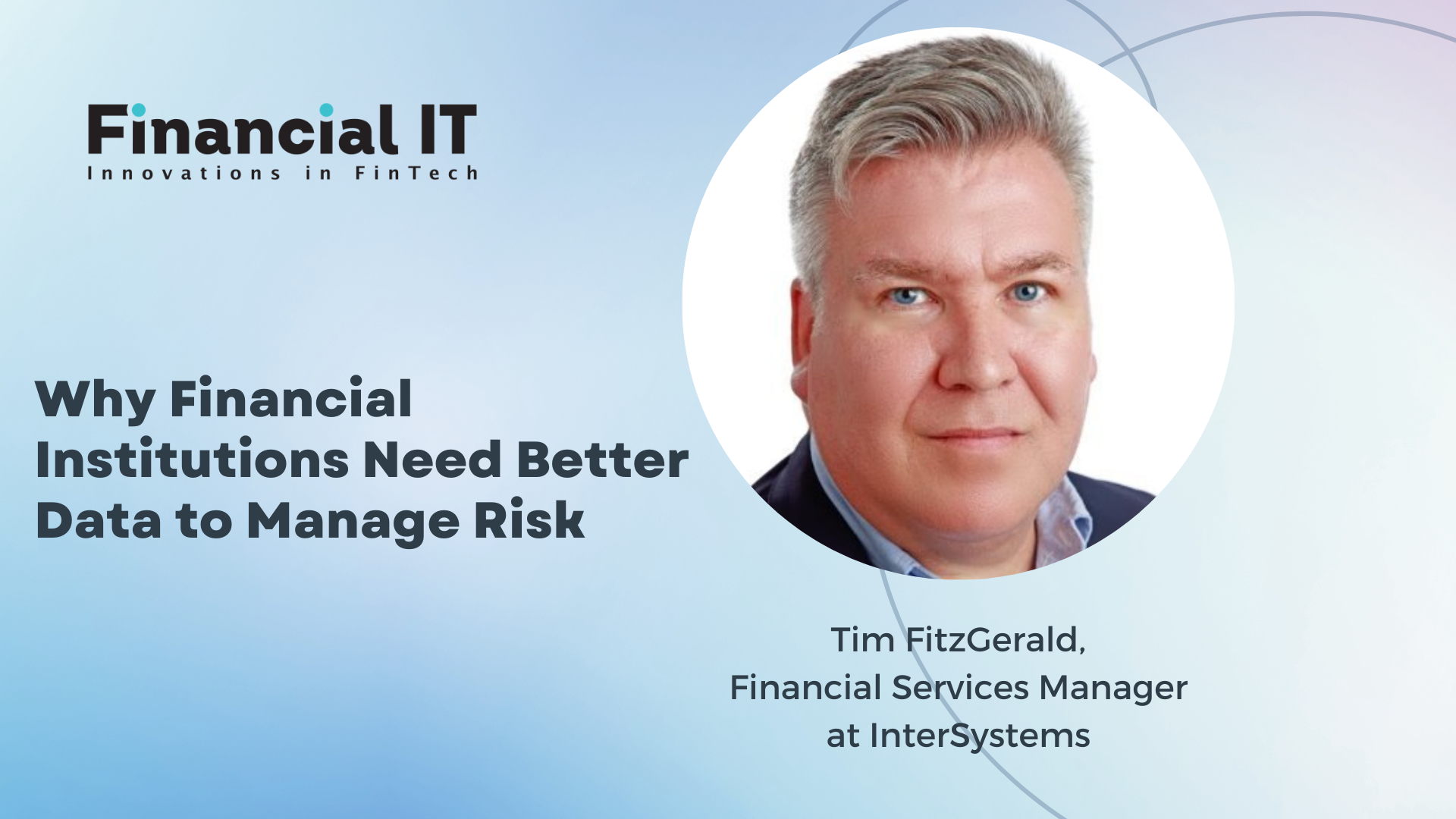Why Financial Institutions Need Better Data to Manage Risk

- Tim FitzGerald, Financial Services Manager at InterSystems
- 11.03.2024 10:45 am #riskmanagement #data
Financial institutions are constantly weighing up the risks they face, seeking to maximise opportunities and minimise the chances of a bad outcome.
For chief risk officers and their equivalents, the job of assessing and managing risk to keep a bank safe, profitable, agile, innovative, and compliant is demanding. This is more prevalent in today’s climate when they’re already under the strain of suppressed margins, heightened competition, and global political and economic volatility. With risk management running the full gamut of credit, market, data governance, and technology, it’s often where the frustrations with the systems and data they have to work with lie.
Senior executive teams will need to explore more innovative approaches to data management if they are to streamline risk management and avoid regulatory penalties. Regulators are better placed than ever to demand and interrogate the entire data landscape, from reports to capitalization calculations. In January 2023, for example, the FCA fined Guaranty Trust Bank (UK) £7.6m for failures in anti-money-laundering risk assessments. In June last year, the FCA fined ED&F Man Capital Markets £17.2m for inadequate oversight and compliance in a trading operation. The fines may not be huge, but the reputational consequences could be very impactful.
It is time for the financial sector to implement a new approach to end the frustrations of teams using out-of-date or unverified data. Having to rely on such data means teams expend much of their time manually cleaning it up and checking it, and even after they have done that few business functions trust it.
In today’s market, managing risk effectively hinges on the availability of high-quality, timely data. The sector faces a pressing need for rapid insights from diverse data sources, both internal and external, to navigate an increasingly unpredictable global environment. Risks can emerge suddenly from any area of business, from the activities of customers, or from new regulations. Yet so many banks and firms rely on out-of-date and unclean data.
This necessity for higher quality data covers the data used by everyone from the front office to settlements, compliance, and client relationships. They all require quick access to data without the need for specialized data scientists to validate and wrangle it. The same goes for CFOs and boards who demand an accurate 360-degree view of risk, covering threats, opportunities, assets, and liabilities. Perhaps a reason for this is that the data quality issue is managed on a tactical level. It’s cleaned and harmonized for one use, and then another team for a different use case optimizes the data again for their use. This inefficiency adds cost, delay, and risk in not having the same version of the trust that is used for decision-making processes.
Speed and quality in a data fabric
The challenge lies in the speed of data acquisition and its quality. Financial organisations compete by relying on clean, normalised, and curated data for swift, informed decision-making. They need high-quality, real-time data in risk management as much as they do when making investment decisions.
Traditional, manual, or ad-hoc IT setups fall short in handling the volume and complexity of data needed for advanced analytics. The volume is constantly expanding, and the number of sources and different formats is too. It is almost impossible to standardize such diverse data with current systems that have been in place for many years.
This is where the concept of the smart data fabric has huge relevance. This innovative IT architecture unifies disparate data sources into a single, reliable stream that is accessible in near-real-time. This approach not only simplifies data management but also enhances performance and eliminates redundancies by maintaining multiple individual data repositories that serve different consumers of the data. Meanwhile, embedded analytics enable real-time advanced analytic processing without moving the data to a different environment.
By adopting a smart data fabric, financial institutions give risk managers the information they need when they need it. As we enter the age of open banking, open finance, and regulatory activism, financial institutions need data that is timely and trustworthy to future-proof compliance and risk management. Without it, institutions face loss of competitiveness through inefficient balancing of assets and liabilities, and of course, the risk of severe penalties.



















